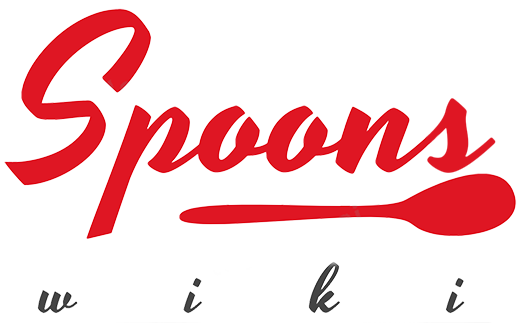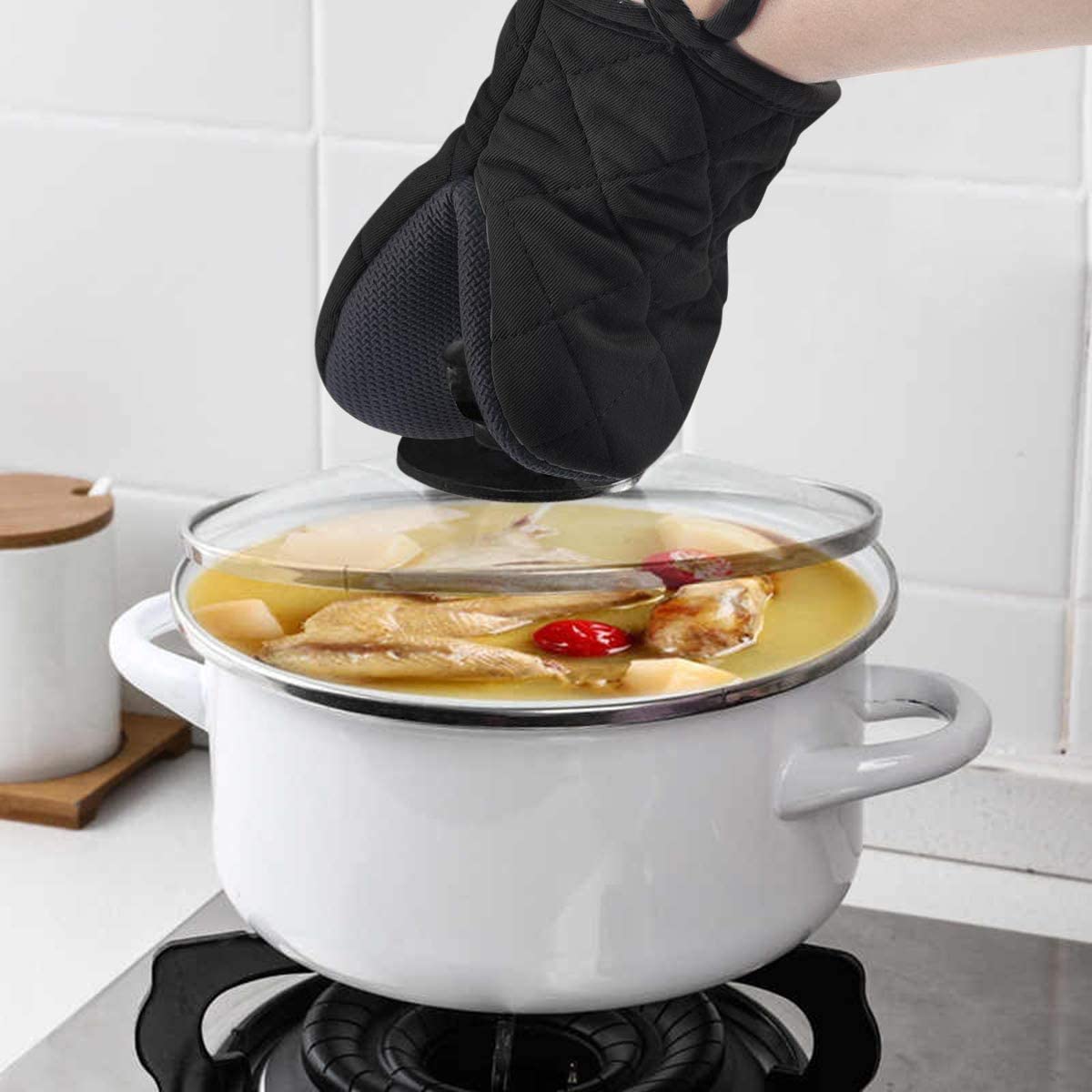Reducing Kitchen Accidents| Keep You and Your Family Safe
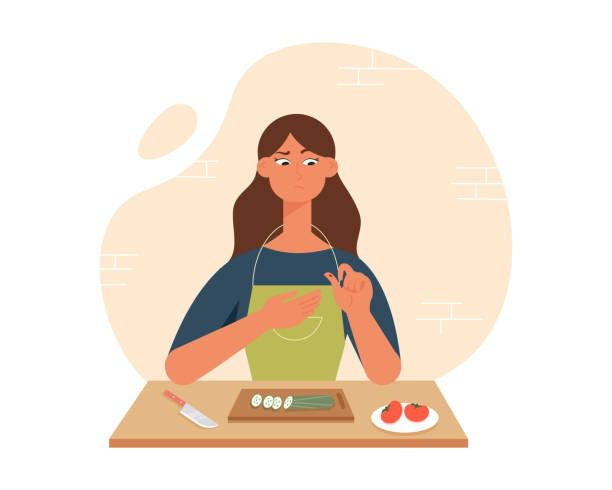
The kitchen is often referred to as the heart of the home, where tasty meals are cooked with love and shared with family and friends. However, it’s also a place where accidents can happen if proper safety measures aren’t followed. From cuts and burns to slips and falls, kitchen accidents can be serious and even life-threatening. In this article, we’ll explore some simple yet effective ways for reducing kitchen accidents and keep you and your loved ones safe while cooking.
Read More: The Importance of Proper Food Handling and Storage
Using knives in the kitchen is an essential skill for any home cook or professional chef. However, it’s crucial to understand that knives can be dangerous if not used properly. Here are some best practices for using knives safely in the kitchen:
↳Tip 1: Use a sharp knife:
A dull knife is more dangerous than a sharp knife because it requires more force to cut through food, increasing the likelihood of slipping and injuring yourself. Keep your knives sharpened regularly.
↳Tip 2: Hold the knife properly:
Hold the handle with your dominant hand and grip the blade at its base with your other hand. Use a firm but relaxed grip.
↳Tip 3: Use a cutting board:
Always use a sturdy cutting board to protect your countertop and provide a stable surface for cutting. Avoid using plates or other surfaces that can move around.
↳Tip 4: Keep your fingers away from the blade:
When cutting, keep your fingers clear of the blade and hold the food with your fingertips curled under and your knuckles against the blade.
↳Tip 5: Cut away from your body:
Always cut away from your body and keep the blade pointed away from yourself.
↳Tip 6: Store knives properly:
When not in use, store your knives in a knife block or on a magnetic strip to keep them organized and prevent accidents.
Read More: Can You Put Sharp Knives in the Dishwasher?
2. How to Prevent Burns and Scalds While Cooking?
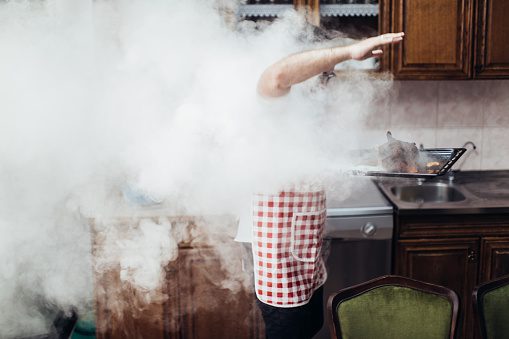
Burns and scalds are common kitchen injuries that can be quite painful and require prompt treatment. Fortunately, there are several steps you can take to prevent them while cooking:
↳Wear appropriate clothing:
When cooking, wear clothing that is fitted and does not have loose sleeves or flowing fabrics that can catch fire or get caught on hot surfaces.
↳Use oven mitts and potholders:
Always use oven mitts or potholders when handling hot pots, pans, and dishes. Avoid using wet or damp cloths, which can conduct heat and cause burns.
↳Be mindful of hot surfaces:
Be aware of hot surfaces such as stovetops, oven doors, and grills, and avoid touching them without protection.
↳Use the back burners:
When cooking on the stove, use the back burners whenever possible and turn the pot handles away from the edge of the stove to prevent accidental spills.
↳Be careful with hot liquids:
When handling hot liquids, such as boiling water or hot oil, use caution and pour slowly to avoid splattering or spilling.
↳Keep children and pets away:
Keep children and pets away from the kitchen while cooking to prevent accidental spills or burns.
↳Maintain a clean and organized kitchen:
Keep your kitchen clean and organized to prevent accidents and spills. Wipe up any spills immediately and avoid cluttering the countertop with unnecessary items.
Tips for Preventing Slips and Falls in the Kitchen
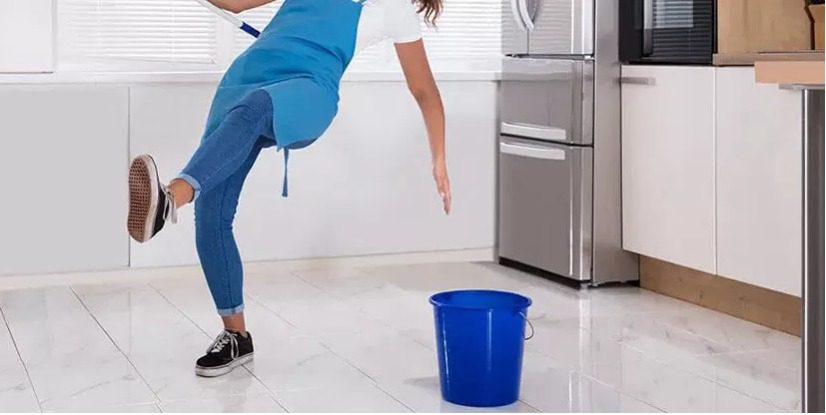
Slips and falls are other common kitchen hazard that can result in serious injuries. Here are some tips for preventing slips and falls in the kitchen:
➡️Wear proper footwear:
When working in the kitchen, wear shoes with slip-resistant soles to provide better traction on wet or slippery surfaces.
➡️Keep the floor clean and dry:
Mop up spills and clean up any debris on the floor immediately to prevent slips and falls. Use slip-resistant mats in high-risk areas like in front of the sink or stove.
➡️Use caution when carrying heavy or hot items:
When carrying heavy or hot items, maintain a clear view of your path and take small, careful steps to avoid tripping or slipping.
➡️Avoid standing on chairs or stools:
Use a step stool or ladder to reach high shelves or cabinets instead of standing on chairs or stools, which can tip over and cause falls.
➡️Install good lighting:
Ensure that your kitchen is well-lit to help you see any potential hazards and avoid tripping or falling.
➡️Keep pets and children out of the kitchen:
Children and pets can easily cause spills and create tripping hazards. Keep them out of the kitchen while cooking or performing kitchen tasks.
➡️Be aware of electrical cords:
Keep electrical cords for appliances and other devices out of walkways and avoid running them under rugs or carpets.
Preventing Electrical Hazards in the Kitchen
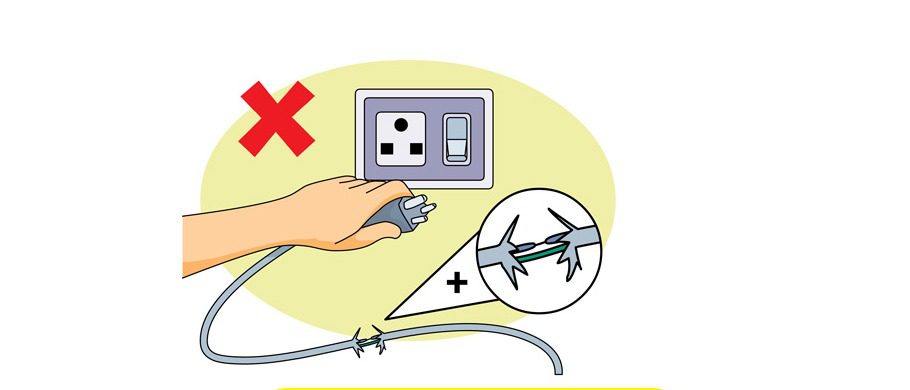
A kitchen is a place with many electrical appliances that can pose serious hazards if not used properly. Here are some tips for preventing electrical hazards in the kitchen:
➡️Choose appliances with safety features:
When purchasing kitchen appliances, choose products with safety features such as grounded plugs, automatic shut-off switches, and overheat protection.
➡️Use appliances according to the manufacturer’s instructions:
Always read and follow the manufacturer’s instructions for using kitchen appliances, including how to plug them in, turn them on and off, and clean them.
➡️Keep appliances away from water:
Never operate electrical appliances near water or with wet hands. Keep appliances away from sinks, faucets, and other sources of water.
➡️Check cords and plugs regularly:
Inspect electrical cords and plugs regularly for signs of wear and tear, fraying, or damage. Do not use appliances with damaged cords or plugs.
➡️Avoid overloading outlets:
Do not overload electrical outlets with too many appliances or devices. Use only one high-wattage appliance at a time per outlet.
➡️Keep appliances away from flammable materials:
Keep electrical appliances away from flammable materials like curtains, paper, and cleaning supplies.
➡️Unplug appliances when not in use:
Unplug kitchen appliances when not in use, especially when cleaning or performing maintenance.
➡️Install ground fault circuit interrupters (GFCIs):
Install GFCIs in your kitchen to prevent electrical shock. These devices will automatically shut off power to an outlet if it detects a ground fault or short circuit.
➡️Use surge protectors:
Use surge protectors to protect your appliances from power surges that can damage them and cause electrical hazards.
➡️Hire a professional for repairs:
If you notice any issues with your electrical appliances or wiring, hire a licensed professional to repair them. Do not attempt to repair them yourself.
How to Safely Handle and Cook With Hot Pots and Pans?
Handling and cooking with hot pots and pans can be dangerous if not done properly. Here are some tips for safely handling and cooking with hot pots and pans:
➧Use oven mitts or potholders:
Always use oven mitts or potholders when handling hot pots and pans. Avoid using wet or damp cloths, which can conduct heat and cause burns.
➧Use the right size burner:
Always use a burner that is the same size as the bottom of your pot or pan. A pot or pan that is too small or too large for the burner can cause it to tip over or spill, leading to accidents.
➧Use the back burners:
When cooking on the stove, use the back burners whenever possible, and turn pot handles away from the edge of the stove to prevent accidental spills.
➧Be mindful of steam:
When cooking with hot pots and pans, be mindful of steam that can escape and burn your hands or face. Always use a lid and tilt it away from you when opening to release steam.
➧Use caution when moving hot pots and pans:
When moving hot pots and pans, use caution and take small, careful steps. Avoid sudden movements or jerks that can cause the pot or pan to tip over and spill.
➧Keep children and pets away:
Keep children and pets away from the kitchen while cooking to prevent accidental spills or burns.
➧Use the right tools:
Use the right tools such as long-handled spoons, tongs, and spatulas to stir, flip, and remove food from hot pots and pans. Avoid using your hands or fingers to handle hot food or utensils.
➧Allow time to cool down:
Before washing or placing hot pots and pans in the sink, allow them to cool down for a few minutes. This will prevent them from cracking or warping due to sudden changes in temperature.
Understanding the Risks Associated with Gas Stoves and Ovens
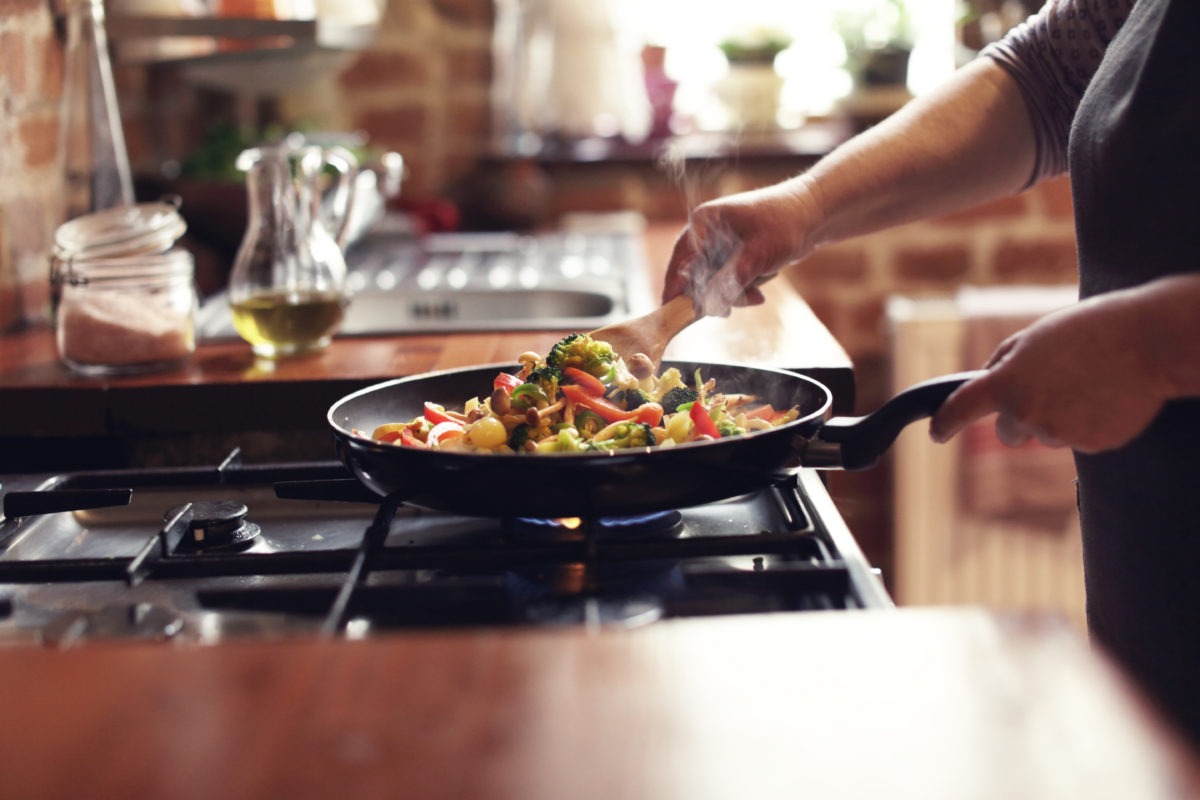
Gas stoves and ovens are common in many kitchens, but they can pose serious risks if not used properly. Here are some risks associated with gas stoves and ovens and how to prevent them:
1. Gas Leaks:
Gas leaks can occur if there is a problem with the gas line or if the stove or oven is not properly installed. Gas leaks can be dangerous, as they can result in fires, explosions, and carbon monoxide poisoning.
⇛Prevention:
To prevent gas leaks, have your gas stove and oven installed and maintained by a licensed professional. Install a carbon monoxide detector in your kitchen to alert you in case of a gas leak.
2. Fire and explosions:
Gas stoves and ovens can cause fires and explosions if not used properly. For example, gas can build up if the stove or oven is not lit properly or if there is a malfunction.
⇛Prevention:
Always follow the manufacturer’s instructions for lighting and operating your gas stove and oven. Keep the area around the stove and oven clear of flammable materials like paper and curtains. If you smell gas or suspect a gas leak, turn off the gas supply immediately and call a professional.
3. Burns:
Gas stoves and ovens can cause burns if not used properly. For example, the stove or oven can be hot even if it’s not visibly on, and pans or pots can get hot and cause burns if not handled properly.
⇛Prevention:
Use caution when handling pots and pans and wear oven mitts or potholders when touching hot surfaces. Keep children and pets away from the stove and oven while cooking. Always turn off the stove or oven and allow it to cool down before cleaning.
4. Carbon monoxide poisoning:
Carbon monoxide is a colorless and odorless gas that can be produced by gas stoves and ovens, especially if they are not properly vented. Carbon monoxide poisoning can cause headaches, dizziness, nausea, and even death.
⇛Prevention:
Install a carbon monoxide detector in your kitchen to alert you in case of a gas leak or carbon monoxide buildup. Make sure your gas stove and oven are properly vented and have them inspected regularly by a licensed professional.
Choosing and Using Kitchen Equipment Safely
Choosing and using kitchen equipment safely is crucial to prevent injuries and accidents in the kitchen. Here are some tips to help you choose and use kitchen equipment safely:
1. Choose high-quality equipment:
When purchasing kitchen equipment, choose high-quality products that meet safety standards and are made from durable materials. Cheap or poorly made equipment may be more prone to breaking or malfunctioning, increasing the risk of accidents.
2. Read and follow the manufacturer’s instructions:
Before using any kitchen equipment, read the manufacturer’s instructions carefully and follow them closely. This will help you understand how to use the equipment safely and avoid accidents.
3. Use equipment for its intended purpose:
Each piece of kitchen equipment is designed for a specific purpose. Using equipment for tasks it was not intended for can lead to accidents or damage to the equipment.
4. Keep equipment in good condition:
Regularly inspect your kitchen equipment for signs of wear and tear, damage, or malfunction. Replace or repair any damaged equipment immediately to prevent accidents.
5. Use equipment in a stable and secure manner:
When using kitchen equipment, make sure it is placed on a stable and level surface. Avoid using equipment that wobbles or tilts, as this can be dangerous.
6. Keep your hands and fingers away from moving parts:
When using equipment with blades or moving parts, keep your hands and fingers away from the moving parts. Use pushers or safety guards to protect your hands.
7. Be cautious with hot equipment:
When using equipment that generates heat, such as ovens, stovetops, or toasters, use caution and wear protective gear like oven mitts or heat-resistant gloves. Avoid touching hot surfaces or equipment with your bare hands.
8. Unplug equipment when not in use:
Unplug kitchen equipment when not in use, especially appliances like blenders or mixers that have sharp blades. This will prevent accidental activation and potential injuries.
9. Store equipment properly:
When not in use, store kitchen equipment properly in a safe and secure location. Keep sharp objects like knives in knife blocks or sheaths, and store heavy equipment on low, stable shelves.
By following these tips, you can help prevent accidents and injuries while using kitchen equipment. Always be mindful of potential hazards and take steps to mitigate risks when using equipment in the kitchen.
The Importance of Wearing Appropriate Clothing and Footwear in the Kitchen
Wearing appropriate clothing and footwear are important safety measures in the kitchen. Here’s why:
1. Wearing appropriate clothing and footwear can help prevent accidents and injuries in the kitchen. Loose clothing, dangling jewelry, or open-toed shoes can get caught in appliances or cause tripping hazards.
2. Wear fitted clothing and close-toed shoes with good traction. Avoid wearing loose clothing or dangling jewelry that can get caught in appliances or catch fire.
Using Timers and Alarms as a Safety Measure in the Kitchen
Using timers and alarms can help prevent kitchen accidents and injuries by reminding you of important tasks or alerting you to potential hazards.
⇛Prevention:
Use a timer or alarm to remind you when to check on food in the oven or on the stove. Set a timer or alarm to remind you to turn off appliances after use or to alert you to a potential hazard, such as a smoke alarm.
By following these safety measures, you can significantly reduce the risk of accidents and injuries in the kitchen. Always be mindful of potential hazards and take steps to prevent accidents and injuries.
FAQs
Q: Why is it important to eliminate kitchen accidents?
A: It is crucial to eliminate kitchen accidents because they can result in serious injuries, ranging from minor cuts and burns to more severe incidents. By prioritizing kitchen safety, you can protect yourself and others from harm, reduce the risk of accidents, and create a safe environment for cooking and food preparation.
Q: What are five ways to prevent cuts in the kitchen?
A: Here are five ways to prevent cuts in the kitchen:
Use sharp knives: Contrary to what you might think, sharp knives are safer than dull ones because they require less force to cut, reducing the chances of slipping.
Proper knife handling: Always hold the knife securely with a firm grip and use the correct cutting technique to minimize the risk of accidents.
Pay attention while cutting: Avoid distractions and focus on the task at hand to prevent accidental cuts.
Use cutting boards: Place a stable cutting board on a flat surface to provide a secure cutting area and protect your countertops.
Store knives safely: Keep knives in a designated knife block or drawer with blade guards to prevent accidental cuts when reaching for them.
Q: How could you improve kitchen safety at home?
- Keep the kitchen clean and organized: Regularly clean spills, remove clutter, and ensure that all appliances and utensils are stored properly.
- Install smoke detectors and fire extinguishers: These devices can help detect and extinguish fires quickly, minimizing potential damage and injuries.
- Use proper ventilation: Adequate ventilation helps remove smoke, steam, and odors, improving air quality and reducing the risk of respiratory issues.
- Practice safe cooking habits: Always supervise cooking, use timers, and avoid leaving the stove unattended to prevent fires and accidents.
- Educate yourself and others: Stay informed about kitchen safety practices and share this knowledge with family members to create a culture of safety in the kitchen.
Q: What are the three main causes of kitchen accidents?
- Human error: Accidents can occur due to distractions, lack of attention, or improper handling of kitchen tools and appliances.
- Equipment malfunction: Faulty or malfunctioning kitchen appliances, such as stoves, ovens, or electrical outlets, can lead to accidents.
- Hazardous conditions: Slippery floors, cluttered countertops, and inadequate lighting can create hazardous conditions that increase the risk of accidents in the kitchen.
Q: What is the purpose of kitchen safety?
A: The purpose of kitchen safety is to prevent accidents, injuries, and potential hazards in the kitchen. By following proper safety practices, individuals can create a secure environment for cooking, minimize the risk of fires, cuts, burns, and other accidents, and ensure the well-being of themselves and others in the kitchen.
Q: How can we prevent dangers in the kitchen?
- Practice good hygiene: Wash your hands thoroughly before handling food to prevent the spread of bacteria and foodborne illnesses.
- Store food properly: Keep perishable items refrigerated at the appropriate temperatures to prevent spoilage and contamination.
- Use caution with hot surfaces: Always use oven mitts or pot holders when handling hot pots, pans, or dishes to avoid burns.
- Keep flammable materials away: Store flammable items, such as paper towels or cooking oils, away from open flames or heat sources to prevent fires.
- Be mindful of electrical safety: Regularly check electrical cords and outlets for damage, and avoid overloading circuits to reduce the risk of electrical accidents.
- Educate yourself: Stay informed about kitchen safety guidelines and best practices to ensure you are aware of potential dangers and how to prevent them.
Conclusion
The kitchen is an essential part of any home, but it can also be a place where accidents and injuries occur. However, by following some basic safety practices, you can help reduce the risk of accidents and injuries in the kitchen. These practices include wearing appropriate clothing and footwear, using timers and alarms, choosing and using kitchen equipment safely, preventing electrical hazards, handling and cooking with hot pots and pans safely, and understanding the risks associated with gas stoves and ovens. By being mindful of potential hazards and taking steps to prevent accidents and injuries, you can enjoy cooking in your kitchen with greater peace of mind. Remember, safety should always be a top priority in the kitchen.

Written by Ikra
More From This Category
10 Hygiene Rules in the Kitchen
10 Hygiene Rules in the Kitchen We all know that the kitchen is the heart of any home, where delicious meals are whipped up and memories are made. But have you ever stopped to think about the importance of hygiene in this culinary haven? Well, fear not! In this...
Types of Kitchen Hygiene that You Sould Know About
Types of Kitchen Hygiene that You Sould Know About Kitchen hygiene is an essential aspect of both professional and home cooking environments. It encompasses a range of practices that ensure the cleanliness, safety, and overall health of the kitchen space and the food...
Safety and Hygiene Rules in The Kitchen
Safety and Hygiene Rules in The Kitchen In our busy lives, it is crucial to prioritize safety and hygiene in our kitchens, where we prepare delicious meals for ourselves and our loved ones. By adhering to proper safety and hygiene rules in the kitchen, we can prevent...
11 Personal Protective Equipment for Cooking in Home kitchen
11 Personal Protective Equipment for Cooking in Home kitchen Whether you’re a newbie in the kitchen or a seasoned pro, it’s super important to protect yourself while cooking. After all, cooking can be pretty dangerous with all those sharp knives, hot...
